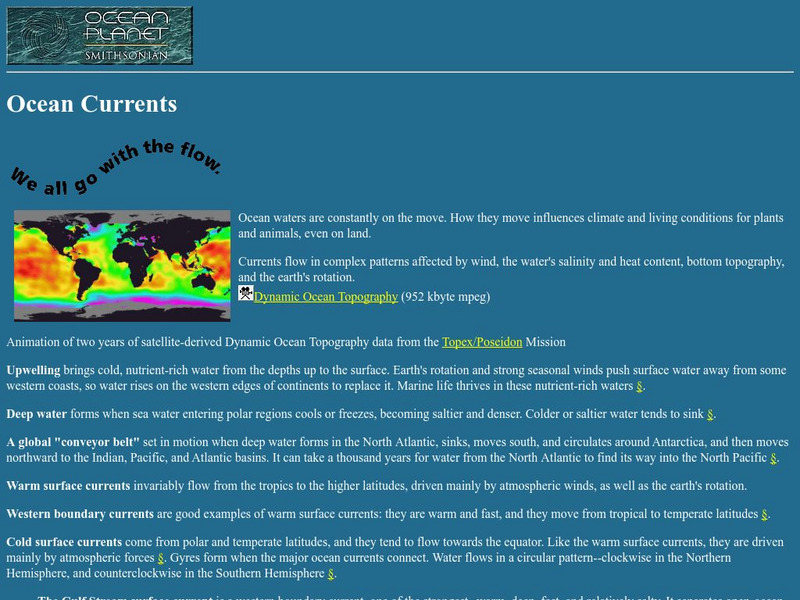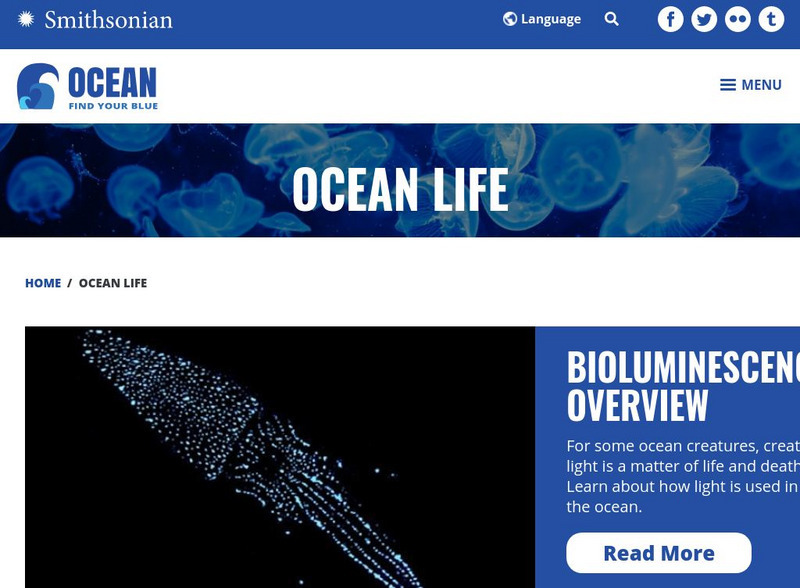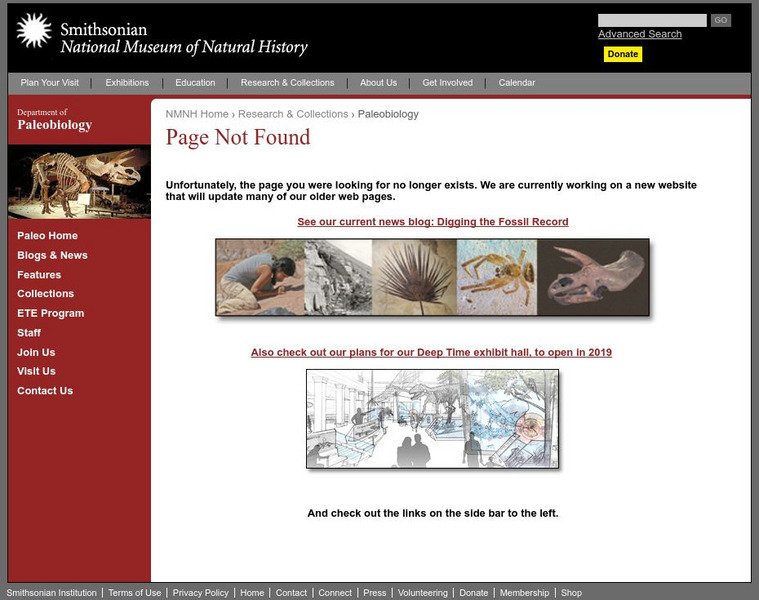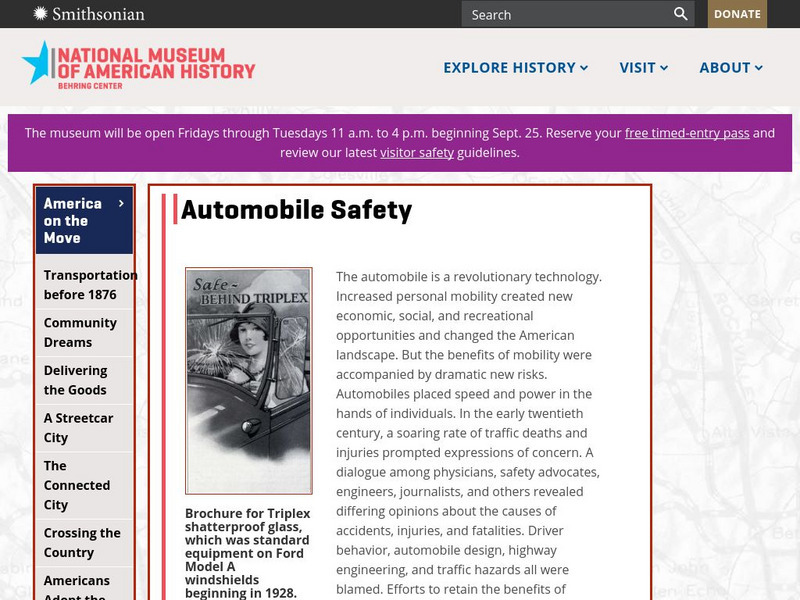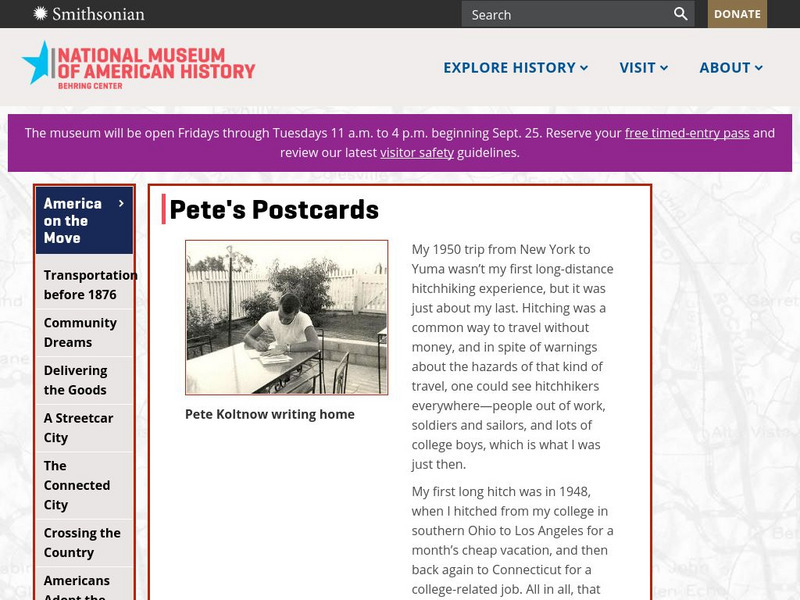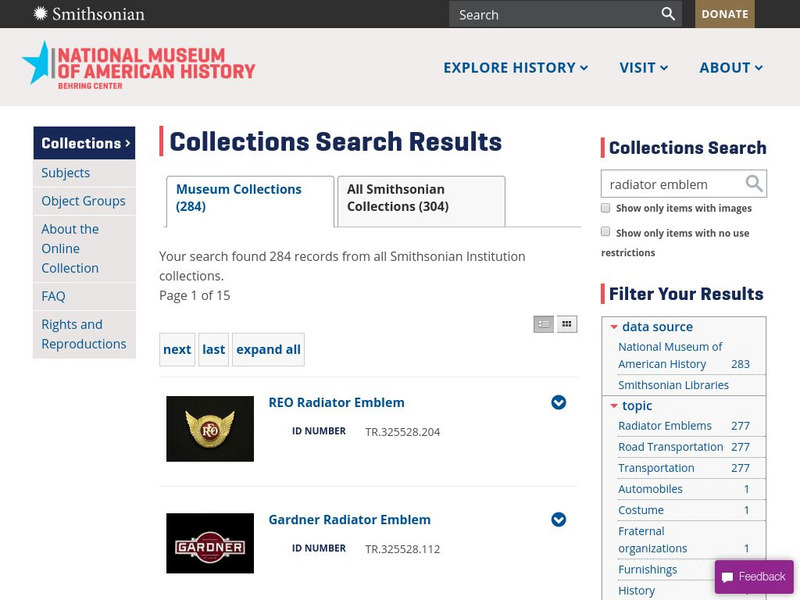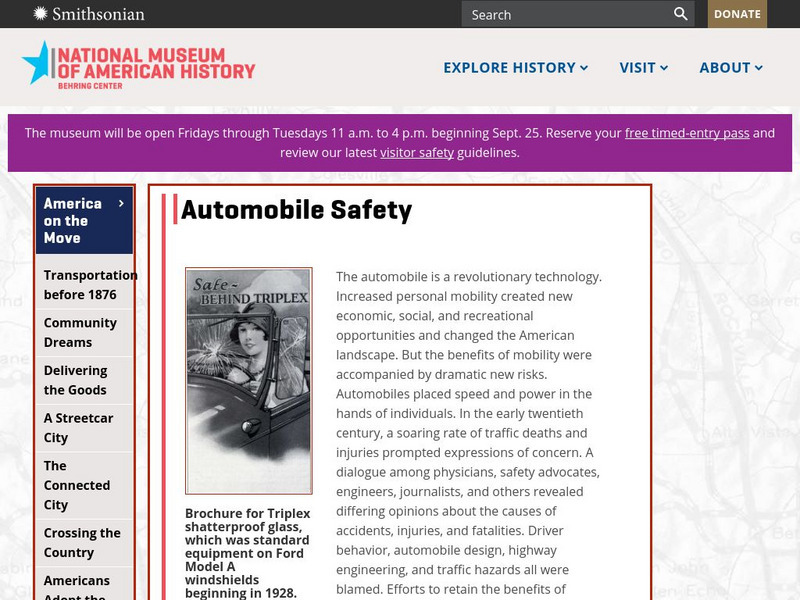Smithsonian Institution
National Museum of Natural History: Ocean Planet
Detailed website that was a companion to a 1995 traveling exhibit of the Smithsonian. Links to lesson plans and other educational materials are at the bottom of the page. Enter the exhibition to explore the world of the ocean.
Smithsonian Institution
National Museum of Natural History: Ocean Planet: Water Pollution Toxic Materials
This site, from an archived Smithsonian exhibit, describes and illustrates the effects of toxic materials on wildlife in bodies of water.
Smithsonian Institution
National Museum of Natural History: Ocean Planet: Ocean Currents
The Ocean Planet exhibit at the Smithsonian explains the general features of ocean circulation. A general look at upwelling, deep water, and currents are combined for an overall view.
Smithsonian Institution
Lemelson Center: Invention at Play
In this mind challenging and creative site, you will learn how play and inventiveness are related. Hear inventors' stories, set your own inventive thinking in motion, and see video commentaries about the nature of play and whether or not...
Smithsonian Institution
Smithsonian Learning Lab: Looking at Bird Beaks
Use this activity as an introduction to adaptations. Students will view video clips of birds and formulate their own observations and explanations for the different types of bird beaks and how they are used.
Smithsonian Institution
Smithsonian in Your Classroom: Plants and Animals: Partners in Pollination
A lesson unit on pollination. Includes background information, lessons and activity pages. One handout is in Spanish.
Smithsonian Institution
Smithsonian Environmental Research Center: Forces of Change: Weaving the Web
The students will become the food web in this fun interactive classroom activity. Detailed instructions, background information, guiding questions, and activity worksheets are provided.
Smithsonian Institution
Smithsonian Libraries: Picturing Words: The Power of Book Illustration
This interactive site focuses on the power of illustration in books. It discusses illustrations that inspire, inform, influence, and show a process; it provides examples and book references that use each.
Smithsonian Institution
National Museum of Natural History: Ocean Portal, You Navigate
Delight in the fresh colors, sights, and sounds on this dynamic site on the ocean. Major categories consist of Ocean Life & Ecosystems, The Ocean Over Time, Ocean Science, and The Ocean and You. New information on sharks, a slideshow...
Smithsonian Institution
National Museum of Natural History: Ocean Portal: Corals and Coral Reefs
Learn about corals and the importance of coral reefs to ocean ecosystems. Find out how reefs are created, what threats they face, and what kinds of conservation tactics are being used to protect and preserve them.
Smithsonian Institution
National Museum of Natural History: Ocean Portal: Ocean Life & Ecosystems
From the tiny to the titanic, from the familiar to the undiscovered, the ocean offers a stunning diversity of marine life and nearly every kind of habitat imaginable. Dive in and explore them here. Links incude stories, videos and photos...
Smithsonian Institution
National Museum of Natural History: Paleobiology: Paleo Art
Collection of art demonstrates a branch of scientific illustration that specializes in drawing fossils and other paleontological subject matter. Includes information on providing proper care for historical paleo art and offers methods of...
Smithsonian Institution
National Museum of Natural History: Vikings: The North Atlantic Saga
This interactive site explores Viking history. It shares who the Vikings were, their archaeology, and literature. Students can use their mouse to travel Viking routes and learn about places the Vikings went. Also, students can listen to...
Smithsonian Institution
National Museum of Natural History: Does Our Background Shape Our Thinking About Environmental Issues? [Pdf]
A lesson where students explore the positive and negative impacts of human activities on the environment today and in the distant past, and examine how attitudes towards the environment might be shaped by one's experiences growing up....
Smithsonian Institution
National Museum of American History: Themes: Auto Safety Pioneers
Since the 1970s, Americans have witnessed an amazing number of safety improvements in automobiles and the driving environment. Seat belts, air bags, safer fuel tanks, the Jaws of Life, and driving while intoxicated (DWI) campaigns are...
Smithsonian Institution
National Museum of American History: Themes: Container Back Story: Container Revolution
America on the Move tells the story of containerization-the technological and operational revolution that transformed the way cargos are loaded and moved among ships, trains, and trucks. Here is a behind-the-scenes look at how the...
Smithsonian Institution
National Museum of American History: Themes: Pete's Postcard
Journey through America's past with Pete as he hitchhikes across the country while viewing the postcards written to his then fiance Dot that highlight his adventures on the road.
Smithsonian Institution
National Museum of American History: Transforming the Waterfront: San Francisco and Oakland, Ca.
Containers-steel boxes stuffed with goods-and the systems for transferring them between ships, trucks, and trains transformed commercial shipping. Containerization streamlined freight handling and slashed the cost of transporting cargoes...
Smithsonian Institution
National Museum of American History: Transportation in America Before 1876
In 1800, the United States was made up of 16 states, all east of the Appalachians, and most people lived within 50 miles of the Atlantic. Oceans and rivers were the nations' highways, providing the only viable way to travel long...
Smithsonian Institution
National Museum of American History: What Is an Emblem?
This tour divides the Smithsonian's collection of 278 radiator emblems into different groupings to demonstrate how similar objects can be interpreted to emphasize certain themes and relationships. The exhibition uses the radiator emblems...
Smithsonian Institution
National Museum of American History: Transatlantic Souvenirs
The Smithsonian's maritime collections contain many objects relating to the steamship Leviathan, the largest American passenger ship of the 1920s and 1930s. View these mementos originally preserved by passengers and crew to remember...
Smithsonian Institution
National Museum of American History: A Streetcar City: Washington, d.c. 1900
American cities in the 19th century were walking cities-most residents worked and shopped close to where they lived. But as electric streetcar (trolley) systems were built in the 1880s, 1890s, and early 1900s, cities expanded. Many white...
Smithsonian Institution
National Museum of American History: Americans Adopt the Auto
This exhibition explores the role of transportation in American history focusing on the way the automobile went from being a plaything of the rich to a major factor in the American transportation landscape.
Smithsonian Institution
National Museum of American History: Auto Safety History
America on the Move explores the role of transportation in American History highlighting its role as a vital part of our business, social, and cultural history. This section provides an overview of the history of automobile safety...




